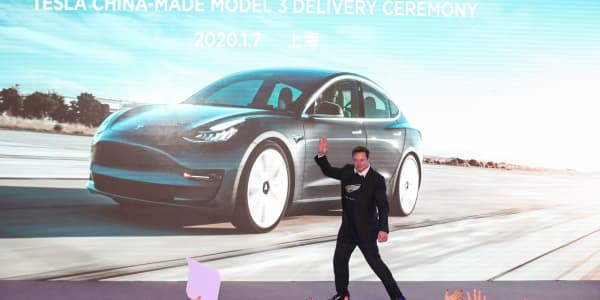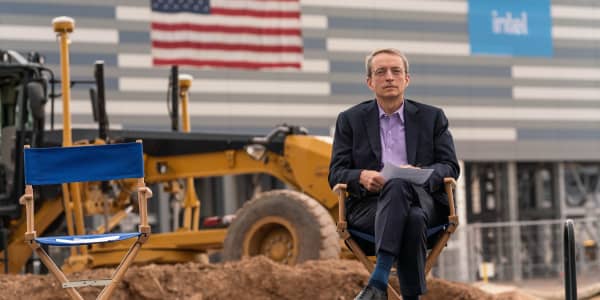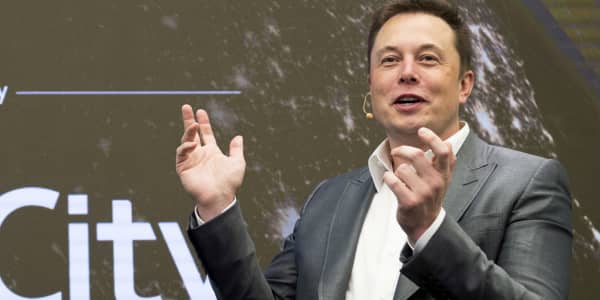Burnaby, British Columbia, is similar to most North American bedroom communities. The majority of its residents commute into neighbouring Vancouver every morning and then head back to their suburban homes at night. There is one thing, though, that sets it apart: Around the corner from one of the two Costcos in town is a small start-up that's inching ever closer to solving the planet's energy problems — and tapping into a yet untouched trillion-dollar market.
That start-up, General Fusion, isn't like the up-and-coming companies you hear about in Silicon Valley, with eccentric founders, rapid growth and millions in revenues, though it does count Jeff Bezos, Microsoft and many others as investors and partners. Rather, it was started in 2002 by then 40-year-old physicist Michel Laberge, who quit a lucrative job at a laser printing company to follow an unconventional passion: nuclear fusion development.
Laberge, who's now the company's chief scientist, was drawn to nuclear fusion because of its world-changing possibilities. Unlike nuclear fission, which involves splitting heavier atoms to create lighter ones and can produce radioactive waste, fusion produces no environmentally harmful gases, no nuclear waste, it can't be made into a weapon, and it will never cause a power plant meltdown.
Fusion occurs when two light atoms fuse together to make a heavier one, creating energy in the process. It's the same process that powers the sun and stars. It also uses deuterium, an atom that's found in hydrogen, which is a key ingredient in water, so there's little risk of running out of the atoms needed to make fusion. According to Live Science, a gallon of seawater can produce as much energy as 300 gallons of gasoline.
It's no wonder, then, that people like Bezos and companies like Cenovus Energy have sunk more than $127 million into the company, according to Crunchbase, while billions of more dollars have been invested in about two dozen other nuclear fusion start-ups, government initiatives and big company projects, such as Lockheed Martin's compact fusion reactor.
So far, no one has commercialized nuclear fusion, but the race is on to be the first to figure it out. Whoever does will be able to bring power to the more than 1 billion who don't have access to electricity, power cars and help companies operate businesses without having to create harmful emissions.
They'll also see a massive return on their investment.
"The market is infinitely large," said Christofer Mowry, General Fusion's CEO. "There's nothing that will be more transformative to the energy space than fusion. It's like how Facebook took over social media or if someone develops a truly practical autonomous vehicle."
Fusion's long life
The concept of fusion has been around for nearly a century, with the Russians making the first nuclear reactor in the 1960s to test various scientific theories.
While the concept has been proved, commercializing fusion remains elusive. Why? Because it's a complex process that can only happen in 100 million degrees Celsius temperatures. Particles must also remain in close proximity with one another, and the plasma, which is ionized gas that's created during the fusion process, must be contained or risk drifting away.
This process also has to be done cheaply and efficiently enough so that it can be used by people around the world.
There's nothing that will be more transformative to the energy space than fusion. It's like how Facebook took over social media or if someone develops a truly practical autonomous vehicle.Christofer MowryCEO of General Fusion
"We do not have a reactor yet that is energy positive in terms of the outflow of energy," said Ariel Cohen, a fusion expert and senior fellow at the Atlantic Council. "It takes so much energy to contain the plasma, but we're hoping someone will be able to it and make it economically viable."
What makes things more complicated is that there may be several ways to create the conditions for fusion to occur — and every company is trying something a little different.
Some, like the International Thermonuclear Experimental Reactor, a coalition of governments that are trying to make fusion viable, use the tokamak, which employs magnets to keep plasma from escaping and cooling off.
Others use lasers to rapidly compress hydrogen into frozen pellets that are 1000 times denser than ordinary matter and can achieve a momentary pulse of fusion.
General Fusion uses a hybrid of both, though it doesn't use lasers. It injects plasma, which is surrounded by liquid metal, into a compression chamber where magnets help contain the gas. Then, pistons put pressure on the chamber to compress the plasma to fusion conditions. The now heated liquid metal gets turned into heat, which then gets turned into electricity.
Race to commercialization
It's still an open question as to if, and when, fusion can be commercialized. Mowry said General Fusion has built all the components to create a reactor, but now it needs to develop a prototype, which will take five years.
"Using a car analogy, we built an engine, the transmission and the wheels; now we have to put it together and drive it down the road at full size," he said.
It will take more time after that to build full-scale plants that can be used to power entire cities. If this were football, Mowry said he'd be on the 25-yard line.
Other companies have made varying degrees of progress. For instance, Commonwealth Fusion Systems, a commercial enterprise spun off by MIT, is about seven years away from creating a more energy-efficient Tokamak reactor.
In partnership with MIT, it is creating magnets out of rare-Earth barium copper oxide, which is a recently commercialized superconducting material. Could this be the ticket?
"We need to design the next-generation machine ... that can produce more fusion power than energy needed to heat it," said Dr. Martin Greenwald, deputy director of the MIT Plasma Science and Fusion Center. "We think we can do that in a relatively short amount of time."
Even when its components are created — it is currently in the R&D phase and likely won't start building components for another two-and-a-half years, said Greenwald — it will still need to create a pilot plant to see if it works. Then it needs to commercialize it, he said.
Lockheed Martin, with its decades of engineering experience and government connections, hopes to unlock fusion's power by creating a compact reactor that's 10 times smaller than existing reactors. It will be so small that it will fit on the back of a truck, it says on its website.
While the company declined an interview, it says online that it's trying to mimic the way sun creates fusion. Its cylindrical reactor, which it calls a small magnetic bottle, is similar to a tokamak, but it's much smaller and uses different magnetic technology.
Lockheed has been mum on its progress, but Cohen said that while it's not a pipe dream, it may not be that close to reality, either.
"This is a field that's proved over decades to be difficult to master," he said. "Every 10 years there's chatter of how we're going to be close to a breakthrough, and I really hope we are."
Greenwald, though, thinks the industry is getting closer to putting all the pieces together. Of course, he thinks MIT's magnetic technology is going to work, but more importantly, he just wants someone to bring this technology to the public.
"Fusion is too important for just one shot on goal," he said. "Just like when you're developing pharmaceuticals, it's good that people are trying different approaches."
Mowry, who is also confident that his technology will be first to market, agrees the more the merrier. While the attempt to commercialize has been going on for decades, he doesn't think companies or investors will get tired of waiting.
"Investors love it," he said. "It answers the existential challenge of climate change, which motivates a lot of private investors. They like that fusion can't make a bomb and there's no long-term waste, and they like that they can access a $10 trillion market opportunity. It's a great story."
WATCH: The feasibility of fusion





